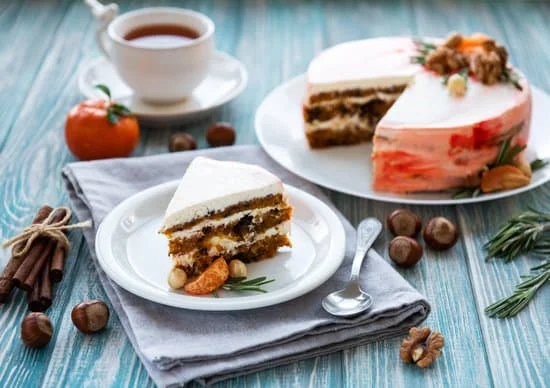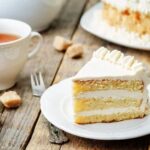When it comes to decorating a cake, the choice of icing plays a crucial role in the overall look and taste of the final product. From buttercream to fondant, each type of icing offers unique benefits and challenges for cake decorators.
The question on every baker’s mind is often, “What is the best icing to decorate a cake?” With a plethora of options available, understanding the characteristics of different icings can help you achieve stunning results in your cake decorations.
Selecting the right icing is not just about aesthetics; it also affects the flavor profile and texture of your cake. Buttercream icing, known for its versatility and creamy texture, can be used in various forms such as American, Swiss, or Italian buttercream. On the other hand, cream cheese frosting adds a tangy flavor that complements certain cakes exceptionally well. Fondant offers a smooth finish for elaborate designs while royal icing allows for intricate details in decorating.
Experimenting with different types of icing can be exciting as you discover which works best for your specific cake decorating needs. Whether you prefer the richness of ganache or the lightness of whipped cream, each option has its own set of advantages and challenges. By delving into the world of cake decoration with various icings, you can unleash your creativity and create visually appealing treats that are sure to impress any audience.
Buttercream Icing
Swiss meringue buttercream is another variation that involves heating egg whites and sugar over a double boiler before whipping it into a fluffy meringue. This type of buttercream has a light and silky texture that pairs well with delicate cake flavors like lemon or almond. Italian meringue buttercream follows a similar process as Swiss but incorporates hot sugar syrup instead. It results in a stable yet soft frosting that is perfect for smoother finishes on cakes.
When it comes to choosing the best buttercream for decorating, consider the design you want to achieve. American buttercream works well for simple decorations due to its stiffness, while Swiss and Italian meringue are better suited for more intricate designs that require precise piping.
Experimenting with different types of buttercream can help you discover what works best for your specific cake decorating needs. So next time you’re wondering what is the best icing to decorate a cake with, don’t overlook the classic choice of buttercream.
Cream Cheese Frosting
When it comes to achieving the perfect consistency for cream cheese frosting, it’s essential to start with softened butter and cream cheese to ensure a smooth blend. Gradually adding powdered sugar while beating the mixture will help achieve the desired texture without becoming too thick or runny. If the frosting ends up too thin, refrigerating it for a short period can help firm it up before applying it to your cake.
For those looking to experiment with flavors, adding a touch of lemon zest or extract can elevate the taste profile of cream cheese frosting. This addition can add a subtle citrus note that complements various cake flavors without overpowering them.
Additionally, adjusting the amount of sugar in the recipe can also help control the sweetness levels based on personal preference. Cream cheese frosting offers decorators a delicious alternative to traditional buttercream, making it a standout choice for those seeking something different what is best icing to decorate a cake
Tips for Achieving the Perfect Consistency
To ensure that your cream cheese frosting has the ideal consistency for decorating, using full-fat cream cheese is crucial as reduced-fat versions may result in a looser texture that is challenging to work with. It’s also recommended to gradually add liquid ingredients like vanilla extract or milk while mixing to avoid making the icing too runny.
Refrigerating the frosting briefly before piping or spreading it onto your cake can help firm it up and hold its shape better during decoration. With these tips in mind, you’ll be able to achieve smooth and easy-to-work-with cream cheese frosting that adds both flavor and visual appeal to your baked creations.
Fondant
When working with fondant, one important technique to master is achieving a smooth finish on the cake’s surface. To do this, it is essential to properly knead the fondant before rolling it out and applying it to the cake.
Use a rolling pin to carefully roll out the fondant into a thin sheet, then gently drape it over the cake while smoothing out any air bubbles or wrinkles. Some decorators prefer using tools like fondant smoothers or paddle tools to ensure an even and smooth finish all around the cake.
In addition to providing a perfect base for decorations, fondant offers endless possibilities for creative cake designs. From sculpted figures and 3D shapes to intricate patterns and textures, fondant allows decorators to let their imagination run wild.
Experiment with different colors, flavors, and techniques like painting or stenciling on fondant to create visually stunning cakes that are sure to impress at any event or celebration. Whether you’re a beginner or experienced decorator, fondant offers endless opportunities for artistic expression in cake decorating.
Royal Icing
To make royal icing, simply combine confectioners’ sugar with pasteurized egg whites and mix until smooth. Adjust the consistency by adding more sugar for stiffer icing or more liquid for a thinner consistency. The key to working with royal icing is piping it through pastry bags fitted with different tips to achieve various designs such as filigree patterns, lace details, or delicate flowers. Practice and patience are essential when working with royal icing to master the art of cake decorating.
Whether you’re a beginner or an experienced baker, royal icing offers endless possibilities for creating stunning designs on your cakes. From simple borders and lettering to elaborate 3D decorations, this type of icing can elevate your cake decorating skills to new heights.
Experiment with different consistencies, colors, and techniques to discover the full potential of royal icing in bringing your cake creations to life. With practice and creativity, you can achieve professional-looking designs that will impress your friends and family at any celebration.
Ganache
When decorating with ganache, it’s essential to consider the consistency of the mixture. For a drip effect on cakes or cupcakes, allow the ganache to cool slightly before pouring it over the edges.
To achieve a smooth finish on the entire surface of the cake, use a palette knife or bench scraper to spread the ganache evenly. Additionally, incorporating ganache into piping bags with different tips can enhance your decorating skills by creating intricate designs or writing on cakes with ease.
To ensure successful results when working with ganache, some best practices include using high-quality chocolate for superior flavor and texture. Properly heating and cooling the ganache can also make a notable difference in achieving the desired consistency for decorating purposes.
Experimenting with different temperatures and techniques will help you find what works best for your specific cake decorating needs. By mastering these skills, you can create visually stunning cakes that not only look impressive but also delight your guests with their delectable taste.
Whipped Cream
One of the key benefits of using whipped cream for cake decorating is its stability when properly whipped. By adding stabilizing agents like gelatin or cornstarch, whipped cream can hold its shape for longer periods, making it suitable for more intricate designs on cakes. Additionally, whipped cream can be used to create elegant rosettes, borders, and swirls that add a touch of sophistication to any dessert.
When working with whipped cream as an icing for cake decoration, it is important to ensure that the cream is chilled before whipping to achieve optimal volume and stability. Using heavy whipping cream with a high fat content will result in a richer and more stable texture.
It is also essential to frost the cake immediately before serving or refrigerate it to prevent the whipped cream from deflating or losing its shape. With proper preparation and execution, whipped cream can be an excellent choice for both beginner and experienced bakers looking to create visually appealing and delicious desserts.
| Whipped Cream Benefits | Whipped Cream Tips |
|---|---|
| Versatile and light texture | Chill before whipping |
| Less sweet than traditional icings | Use high-fat heavy whipping cream |
| Pair well with various cake flavors | Frost immediately before serving |
Tips and Tricks for Cake Decorating
When it comes to cake decorating, choosing the right icing is crucial to achieving a beautiful and delicious end result. One of the most common mistakes to avoid in cake decorating is using the wrong consistency of icing. It is essential to have the right thickness for piping intricate designs or creating smooth finishes. To achieve the perfect consistency, make sure to follow your recipe’s instructions carefully and adjust with additional powdered sugar or liquid as needed.
Another common mistake in cake decorating is not properly preparing your cake before applying the icing. Crumbs on the surface can ruin a smooth finish, so it’s important to do a crumb coat by applying a thin layer of icing before adding more for decoration. This will help seal in any crumbs and create a clean canvas for your final design. Additionally, chilling your cake before decorating can also help with stability and ease of application.
Using the right tools and techniques can make a significant difference in the professional look of your decorated cakes. Invest in quality piping bags, tips, offset spatulas, and turntables for smoother decorations. Practice different piping techniques such as rosettes, ruffles, and borders to add variety and creativity to your designs. Experimenting with different textures like using stencils or painting with edible colors can also elevate your cake decorations to the next level.
If you encounter any issues with your icing while decorating a cake, don’t panic. Troubleshooting common problems like air bubbles in royal icing or ganache that is too runny can be solved with simple adjustments.
For example, gently tapping the finished product with a toothpick can eliminate air bubbles, while adding more chocolate to runny ganache can thicken it up. Remember that practice makes perfect when it comes to cake decorating, so don’t be afraid to try new techniques and flavors until you find what works best for you.
Conclusion
In conclusion, when it comes to choosing the best icing to decorate a cake, there are several options to consider based on your preferences and the desired outcome of your cake decoration. Each type of icing has its own unique characteristics and benefits, from the rich and smooth texture of ganache to the versatility of royal icing for intricate designs. Buttercream icing offers a classic choice with various types like American, Swiss, and Italian that cater to different decorating needs.
Cream cheese frosting provides a tangy flavor profile that pairs well with certain cakes, while fondant opens up a world of creative possibilities with its ability to create smooth finishes and intricate decorations. Whipped cream offers a light and airy alternative to traditional icing, adding not only visual appeal but also enhancing the taste of your cake.
By experimenting with these different icing options and techniques, you can discover what works best for your decorating style and create stunning cakes that will surely impress your guests.
In the end, cake decorating is not just about making a visually appealing dessert but also about expressing creativity and artistry through different icing choices. Whether you prefer the richness of ganache, the elegance of fondant, or the simplicity of whipped cream, there is no one-size-fits-all answer to what is the best icing to decorate a cake.
The key is to have fun exploring these options, honing your skills with tips and tricks along the way, and ultimately finding your favorite icing that will elevate your cakes to delicious works of edible art.
Frequently Asked Questions
What Type of Icing Is Best for Decorating a Cake?
The best type of icing for decorating a cake depends on the desired look and taste. Some popular options include buttercream icing, royal icing, fondant, and cream cheese icing. Buttercream is versatile and easy to work with, while fondant provides a smooth finish for more intricate designs.
What Frosting Do Professionals Use?
Professional bakers often use Swiss meringue buttercream or Italian meringue buttercream for frosting cakes. These types of frostings are smoother, less sweet, and hold up well in warm conditions which is essential for creating elaborate decorations that need to stay put.
Is Frosting or Buttercream Better for Cake Decorating?
When it comes to cake decorating, both frosting and buttercream have their advantages. Frosting tends to be sweeter, thicker, and holds its shape well for creating detailed designs or piping borders.
On the other hand, buttercream has a smoother texture that can be used as a canvas for more artistic decorations like swirls or flowers. Ultimately, the choice between frosting or buttercream comes down to personal preference and the specific design goals for the cake.

Welcome to our cake decorating blog! My name is Destiny Flores, and I am the proud owner of a cake decorating business named Cake Karma. Our mission is to provide delicious, beautiful cakes for all occasions. We specialize in creating custom cakes that are tailored specifically to each customer’s individual needs and tastes.





